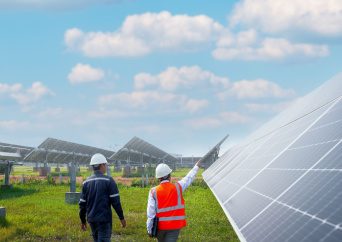The burgeoning solar industry has been a leading light in the global transition towards renewable energy. Its growth trajectory has been powered by continuous advancements in technology, leading to solar energy becoming more efficient, affordable, and accessible. However, the solar industry’s growth is not solely technology-dependent. It also navigates a complex financial and regulatory landscape, a significant part of which involves solar surety bonds. As emerging technologies continue to transform the solar industry, they concurrently influence solar surety bonds in multiple ways, affecting risk assessment, cost, and regulatory compliance.
Understanding Solar Surety Bonds
Surety bonds serve as a form of insurance designed for solar energy providers to guarantee their performance and financial obligations to project owners or investors. These bonds operate as a safety net, protecting the owners or investors against potential losses if a solar company fails to fulfill its contractual obligations. Solar surety bonds typically cover the installation, operation, and potential removal of solar power systems. In essence, they are a crucial component of the risk management process within the solar industry.
The Impact of Emerging Technologies on Solar Surety Bonds
Improved Solar Panel Efficiency
The efficiency of solar panels, which refers to the amount of sunlight they can convert into usable electricity, has significantly increased due to new technological developments. One such example is the advent of Perovskite solar cells, which show remarkable promise in enhancing efficiency levels beyond what is currently achievable with traditional silicon-based cells.
This increase in efficiency directly impacts the number of panels needed for a project, leading to a decrease in installation risks and a subsequent reduction in costs. With reduced risks and costs, the potential liability that surety bond providers take on could diminish. This, in turn, can lead to lower bond premiums for solar companies, making solar projects more financially appealing and contributing to the industry’s growth.
Energy Storage Technology
A significant hurdle in the solar industry is the intermittent nature of solar power. Solar energy, by default, can only be generated during daylight hours and under favorable weather conditions. However, emerging energy storage technologies, like advanced batteries and thermal storage, are addressing this issue, making solar power more reliable and dependable.
Reliability is a key factor in the risk assessment process for surety bonds. As energy storage technology improves, the dependability of solar energy increases. This has a two-fold effect on solar surety bonds. Firstly, it reduces the perceived risk associated with solar projects, making them more attractive investments. Secondly, it could lead to more favorable terms for solar surety bonds, further boosting the industry’s prospects.
Digital Twin Technology
Digital twin technology involves creating a virtual model of a physical system. This technology allows for the simulation of solar power plants, providing valuable insights into their operation and potential issues. It can predict the behavior of a solar power plant under various conditions and identify potential pitfalls, contributing to better project planning and execution.
For surety bond providers, digital twin technology could offer a more accurate risk assessment as it provides a detailed preview of a project before it’s built. This technology can identify potential challenges, allowing for preemptive solutions. By reducing unforeseen problems and enhancing project reliability, digital twin technology may lead to a reduction in the risk and cost associated with surety bonds.
Blockchain and Smart Contracts
Blockchain technology and smart contracts are slowly but steadily gaining traction in the renewable energy sector. Smart contracts are self-executing contracts with the terms of the agreement directly written into code. They can automate payment processes and ensure contract compliance, thereby reducing administrative burdens and enhancing efficiency.
The integration of blockchain and smart contracts could significantly enhance transparency and trust among parties involved in a solar project. The increased transparency could help mitigate risks associated with contract fulfillment, potentially impacting the terms and cost of surety bonds. By creating a more streamlined and transparent process, blockchain and smart contracts could make it easier for surety bond providers to monitor and manage their risk exposure, leading to more favorable terms for solar companies.
Artificial Intelligence (AI) and Machine Learning (ML)
Artificial Intelligence and Machine Learning technologies have vast applications in the solar industry, with their capabilities ranging from predictive maintenance to optimizing energy distribution. These technologies can streamline operations, improving the efficiency and reliability of solar installations, which are key factors in the risk assessment for surety bonds.
For example, AI and ML can predict when a component might fail or require maintenance. This ability to foresee and address issues can minimize downtime and maximize productivity, thereby increasing a project’s profitability. By reducing potential losses, these technologies can lower the risk associated with solar projects and consequently reduce the cost of surety bonds.
Internet of Things (IoT)
The Internet of Things, a network of interconnected devices that communicate and share data, can provide real-time monitoring and control over solar power systems. This constant monitoring can immediately detect any malfunctions or inefficiencies, allowing for swift corrective actions. The efficiency gains and risk reduction from IoT applications could result in lower surety bond costs.
Advanced Material Science
Advanced materials, such as bi-facial solar panels and solar skins, offer enhanced durability and aesthetic appeal. Bi-facial solar panels can generate electricity from both sides, increasing efficiency. Solar skins can blend with their surroundings, opening up new locations for solar installations. These materials may increase the profitability and feasibility of solar projects, which could translate to lower risk and cost for surety bonds.
Conclusion
The solar industry’s evolution, driven by emerging technologies, is shaping the landscape of solar surety bonds. Technologies that increase efficiency, reliability, and risk assessment could lead to more favorable terms for surety bonds, reducing financial barriers for solar projects. However, as with any transformative changes, there are challenges to address. Regulatory bodies, solar companies, and surety bond providers will need to adapt and work collaboratively to ensure these technologies are integrated effectively and responsibly.
The future of the solar industry is promising, with technology playing a pivotal role in its growth. Stakeholders need to understand the implications of these technologies on the financial and regulatory aspects of solar projects. By doing so, they can effectively manage the risks associated with these projects, optimizing the benefits of surety bonds and driving the industry forward.
In the long run, a nuanced understanding of how emerging technologies impact solar surety bonds can help stakeholders strategically navigate the evolving landscape of the solar industry. These advancements can potentially reshape the industry, making solar energy more accessible and affordable, thus contributing to a sustainable future. The solar industry, with its confluence of technology and sustainability, stands poised to be a key player in the global move towards renewable energy. As such, the interplay between emerging technologies and solar surety bonds will likely remain a significant area of focus in the coming years.
Material posted on this website is for informational purposes only and does not constitute a legal opinion or medical advice. Contact your legal representative or medical professional for information specific to your legal or medical needs.



